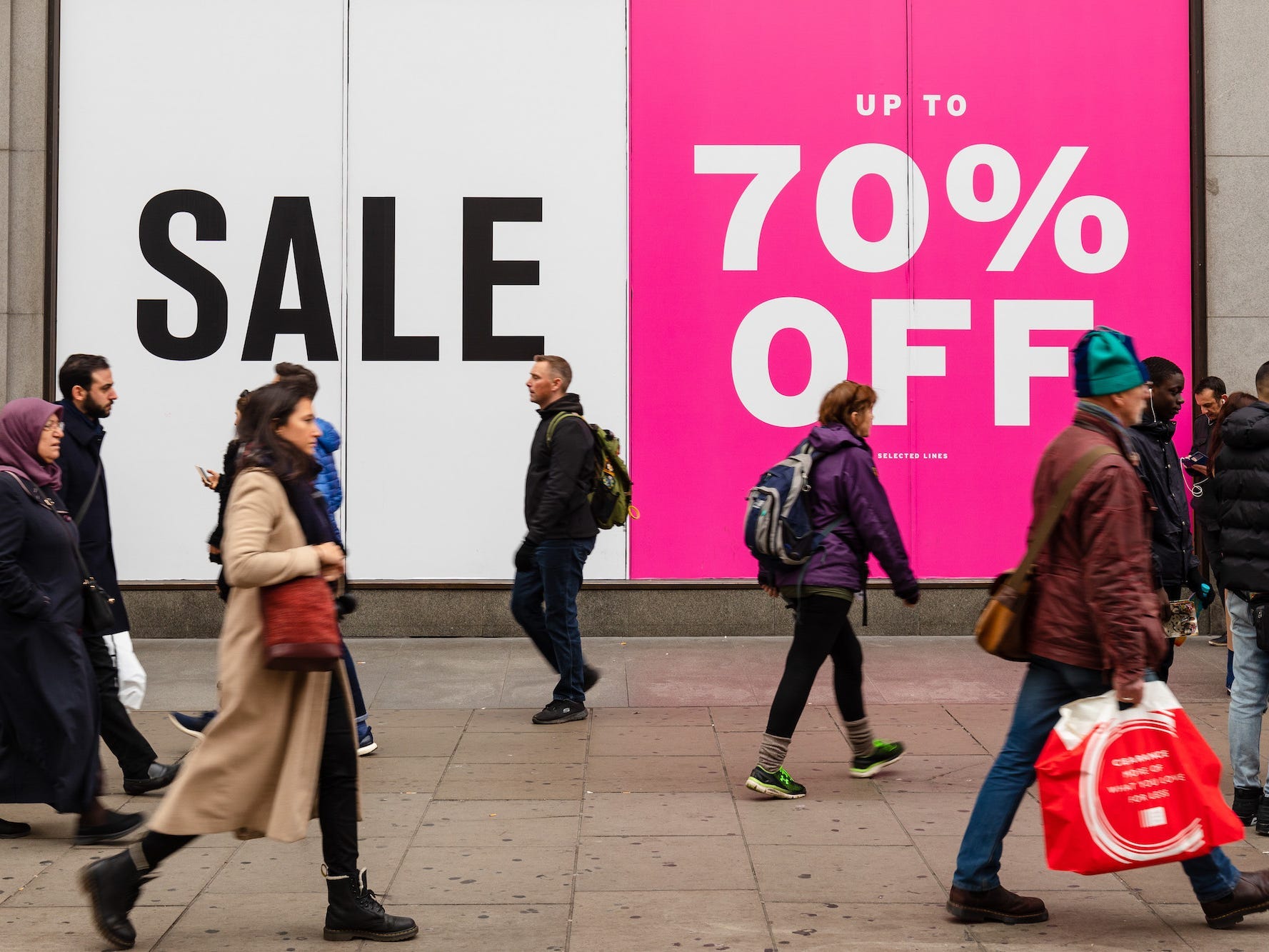
PEOPLE AREN'T SPENDING LIKE THEY USED TO AND IT'S FORCING COMPANIES LIKE NIKE AND WALGREENS TO MAKE DRASTIC CHANGES
- US consumer spending — especially on physical goods — has been in a yearlong squeeze.
- Even as inflation cools, high prices are still putting a dent in household budgets.
- The increased frugality means retail brands are having to balance creativity and discipline.
US consumers are in a weird place this summer.
People are still spending money, but there's an uncomfortable awareness that years of price hikes mean each dollar doesn't go as far as it used to.
Over the past year or so, US shoppers have been dialing back on buying physical goods while still springing for travel, restaurants, and other experiences.
And even though prices have largely slowed from their pandemic-era increases, they're still up roughly 20% from 2020 and unlikely to tick back down.
That's putting a sizable dent in household budgets.
Joseph Lewis, 33, told Bloomberg he has been looking for ways to preserve the financial cushion his family managed to pull together in 2021.
"We're in a space where we have to be financially creative in terms of really figuring out what it is you can do without and even what it is that you can perhaps do on your own," he said.
Now, retail brands are feeling the pinch from this slow-moving slowdown.
This week, both Nike and Walgreens reported earnings that were challenged by declining sales.
The shoemaker responded by saying it would reallocate $1 billion to "consumer-facing" initiatives to spur demand, while the drug store said it would close a "significant" portion of more than 2,000 underperforming locations in the next three years.
Meanwhile, Lowe's CEO Marvin Ellison said things are going more or less according to plan for the home improvement retailer, which is to say not great.
"This consumer remains very cautious, specifically when you think about larger ticket discretionary purchases," he told Oppenheimer analysts Wednesday. "The sentiment for the DIY consumer remains a bit weak."
"We think it's going to be focused more on smaller projects and looking for value, and we are working to position ourselves to be in that space as effectively as we can," he added.
And for Walmart, which has fared quite well through this belt-tightening phase, CFO John David Rainey on Tuesday described customers as being "choiceful."
"If you look at our revenue growth, though, it's almost entirely driven by units versus price," he said, meaning that the retail giant is making more of its money from bigger shopping baskets than from higher prices.
The corporate commentary comes on the heels of reports from the Federal Reserve Banks of San Francisco and Philadelphia, which find a more precarious situation this year for US households compared with last year.
The San Francisco Fed said last month that the $2.1 trillion worth of "excess savings" in consumer accounts has been fully depleted, and the Philadelphia Fed found this month that higher-income households reported an increased concern regarding their ability to "make ends meet" over the coming year.
None of this is to say the economy is in a bad spot right now, but for a lot of folks it doesn't exactly feel good either, and that is a sentiment retailers are going to need to address with a mix of creativity and discipline.
Creativity — as a few companies have shown this year — means investing in products, services, and prices that get customers excited, while discipline is making sure the math still works for the business.
It doesn't have to be complicated, either. Look no further than Costco's beloved hot dog combo or Arizona Iced Tea founder Don Vultaggio, who made headlines for his commitment to keeping his price at 99 cents per can.
"We're successful, we're debt-free, we own everything," he said. "Why have people who are having a hard time paying their rent have to pay more for our drink?"
If you enjoyed this story, be sure to follow Business Insider on Microsoft Start.
2024-06-29T09:12:06Z dg43tfdfdgfd